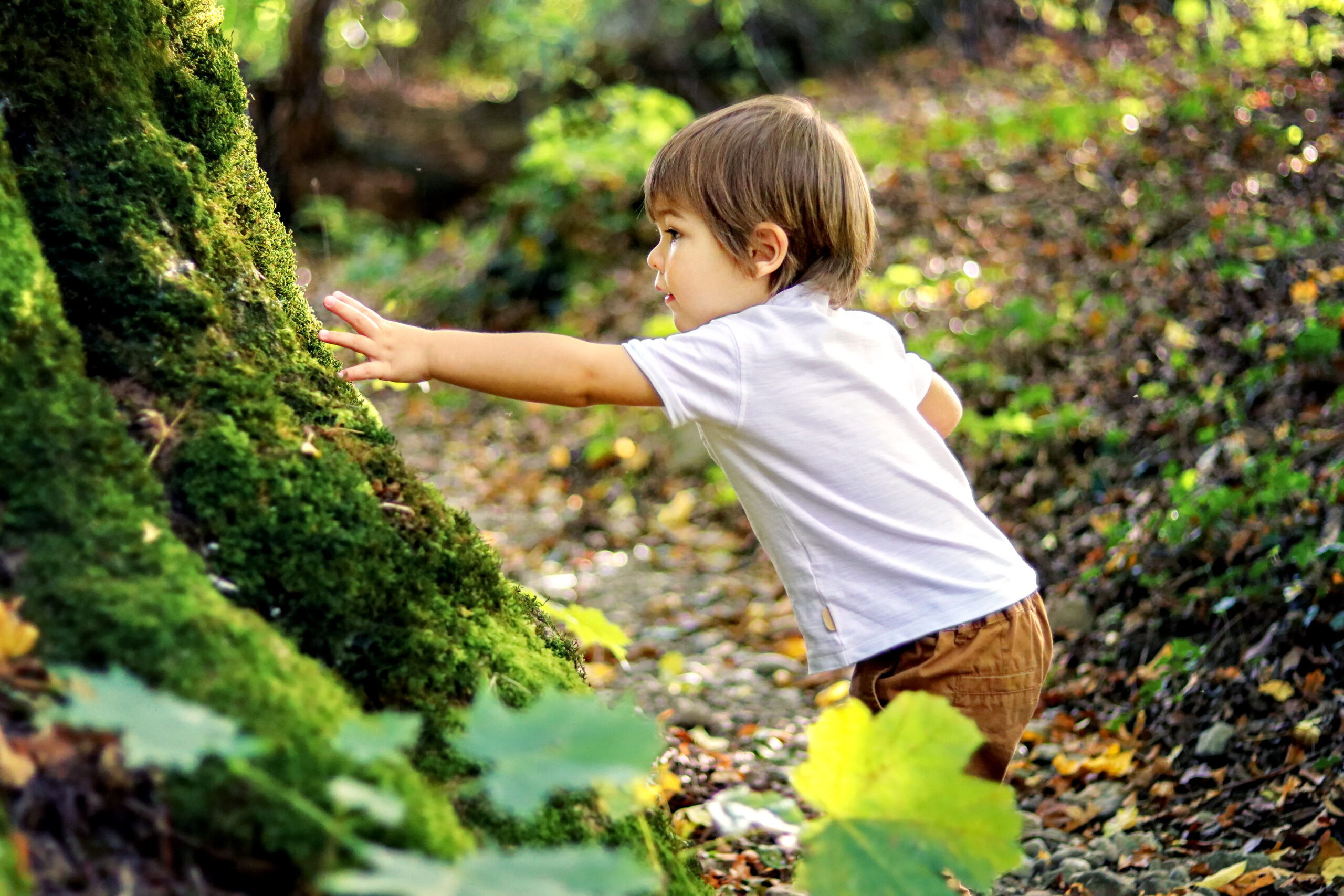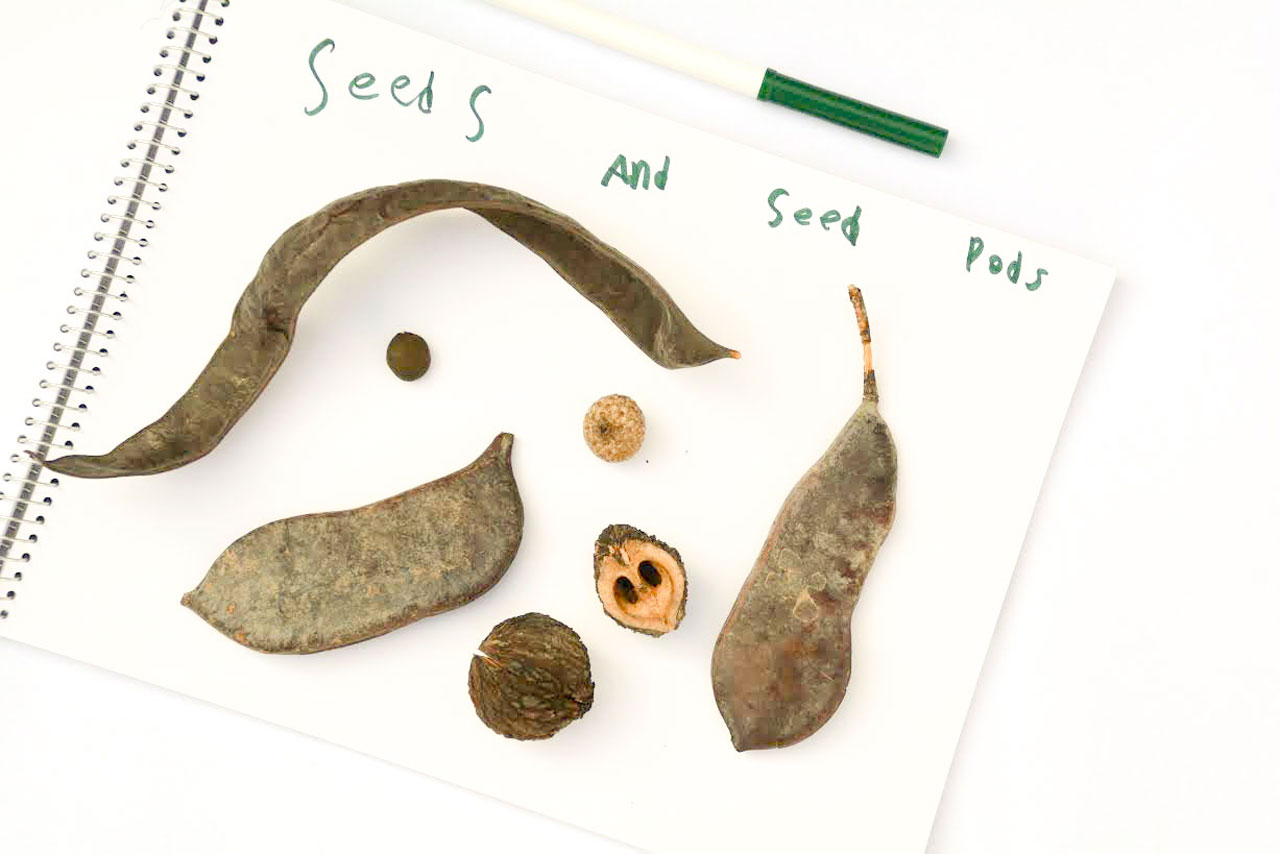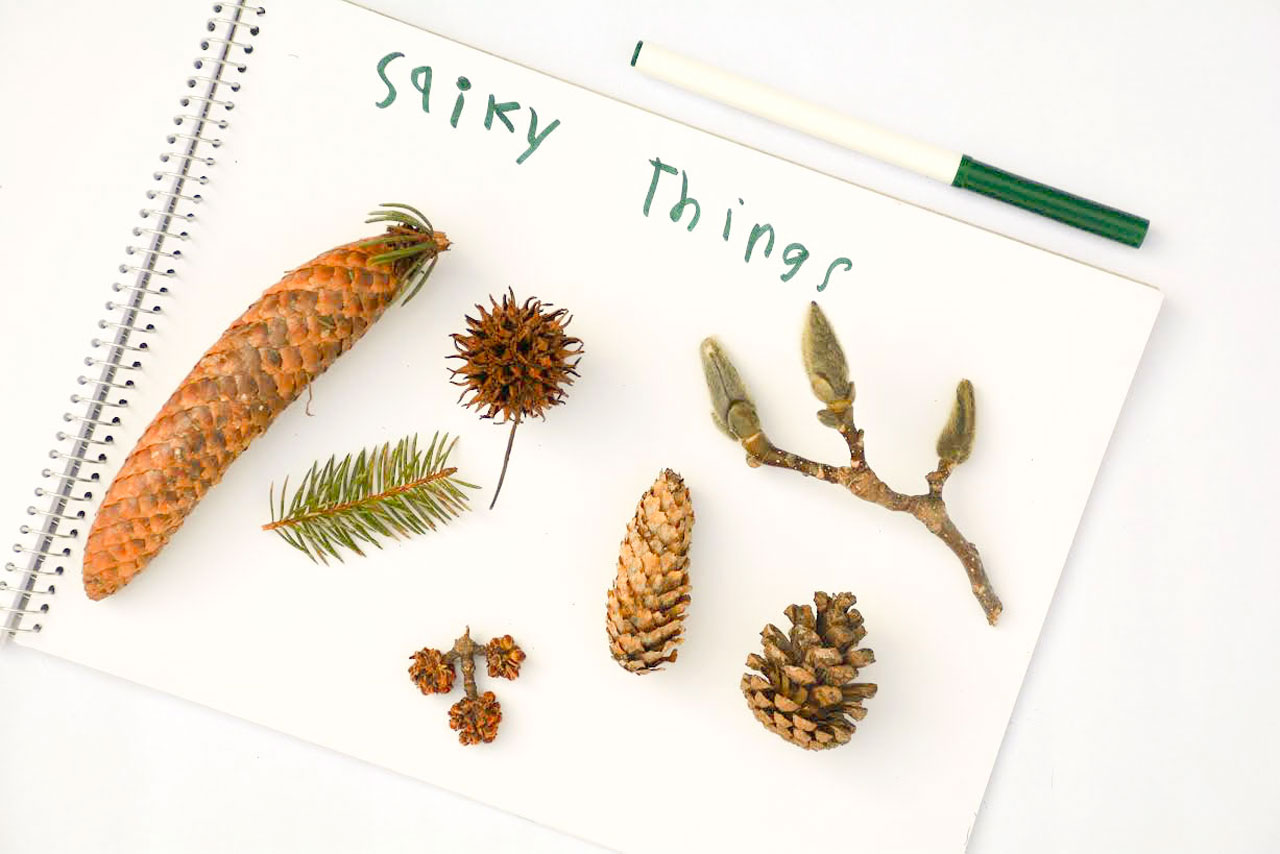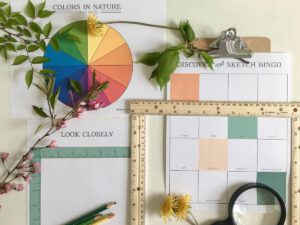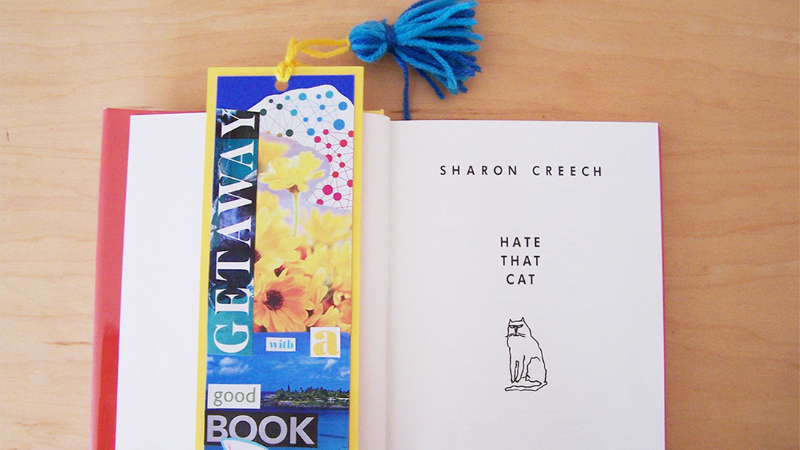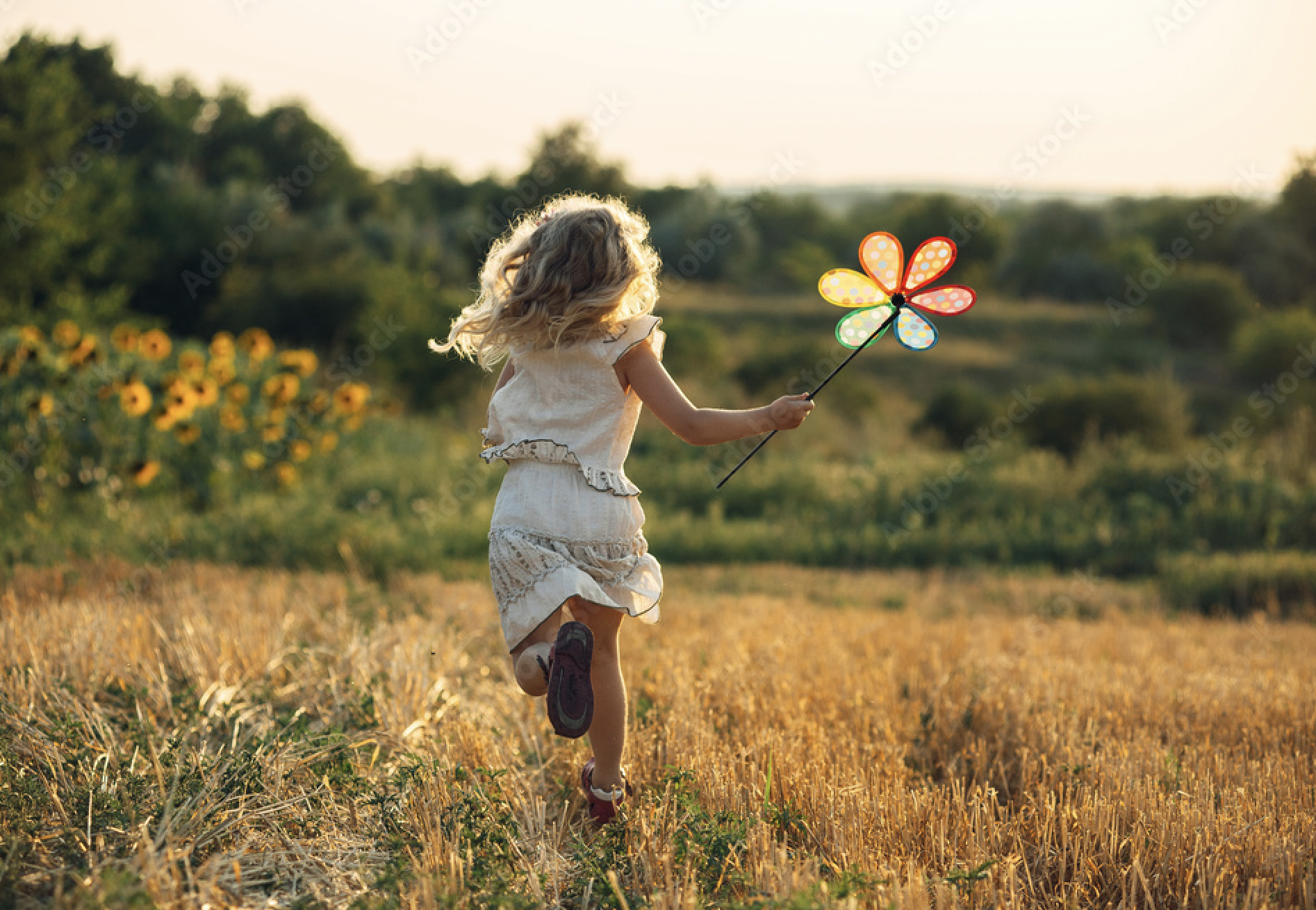Children are natural collectors. If you’ve ever taken a walk with your child you know this is true, because you can’t make it down the block without them picking up a handful of leaves, acorns, rocks, and sticks. Our strollers, bike baskets, and pockets become filled to the brim with tiny treasures. So to honor the little collectors in your life, and these first weeks of spring, grab a few plastic bags along with a pencil, a notebook, a camera, a copy of Keri Smith’s book How to Be an Explorer of the World and set out on a spring adventure!
Some of you may be asking, who is Keri Smith? On her website, the Canadian born Smith describes herself as an author/illustrator turned guerrilla artist. You also might be familiar with Wreck This Journal (2007), which is arguably her best-known book. In it, Keri plays with the idea that imperfections are merely a part of the creative process. Imperfections are what make each artist’s work unique. She encourages the reader to let go of any inhibitions and do things outside of their comfort zone. The reader is told to tear pages out, color outside of the lines, and scribble wildly. This book will remind you that creativity is about the journey and not always the end product.
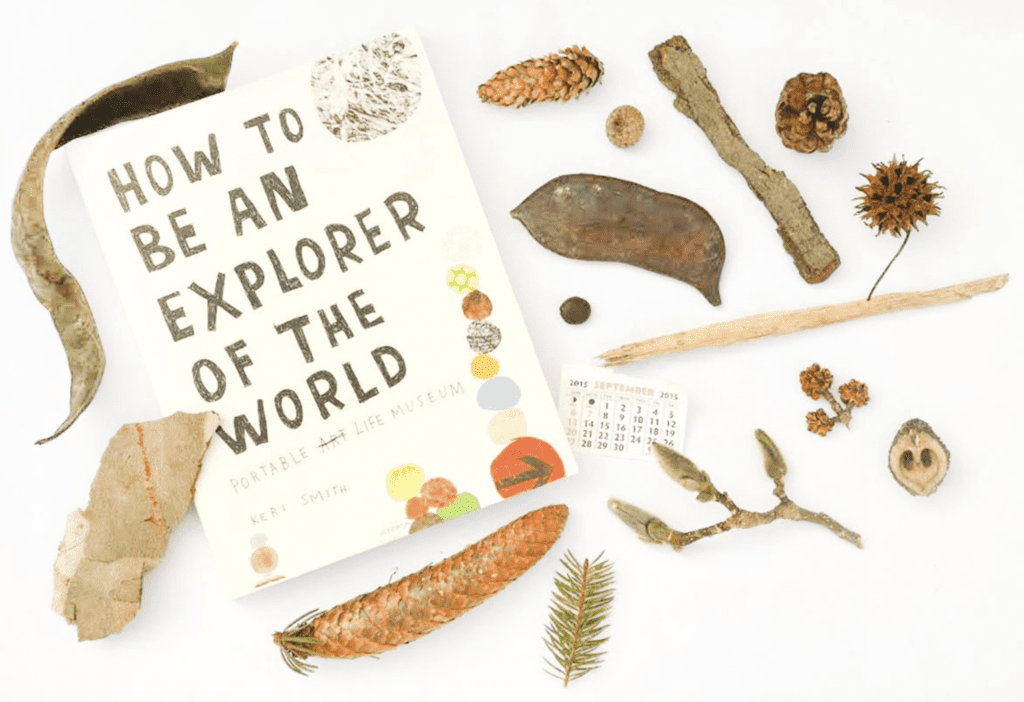
In a November 2014 interview with Time magazine Keri said, “What I’m doing is trying to get kids to pay attention, to look at the physical world more, and to question everything.” On the initial pages of How to Be an Explorer of the World (2008), Keri does just that. She urges us to always be looking and to notice the ground beneath our feet. We love that one simple idea. So as you and your child venture out on your spring walk, go a bit slower than you normally would and look for things you haven’t noticed before. Of course you should still collect any (and all) interesting objects you find during your exploration, but when you bring them home this time, observe them more closely.
Your child may want to document his findings in a notebook by drawing pictures, writing words, or dictating his ideas to you. Have a microscope or magnifying glass? You’ll want to have it on hand!
On one of our many walks with children, our collection included natural items such as a piece of bark, several pine cones, and a few different kinds of seedpods. However, we also found some man-made items like a page off a very small calendar and a curious piece of green string. We probably wouldn’t have picked them up had we not been set on noticing everything beneath our feet, but both discoveries surely had stories attached to them, and those stories might provide a starting point for another day’s activity.
And yes, it might take you twice as long to reach the park this time … you’ll be stopping more often, looking at things closer, observing details a tad longer, and communicating more. Inevitably one of you will probably say something like, “I never noticed that hole in the tree before” or “Did you see those tiny white flowers growing up from the grass? They weren’t there yesterday!”
Then when you return home, let your child’s interest level and desires drive what might come next. One child might want to share what they discovered on their walk. On the contrary, another child might prefer to “be done” and move onto something else. For some children, the process of collecting is enough and the observation part can be saved for another day (or maybe not at all).
For children who want to continue the exploration, you can:
- Make a list of what you found.
- Discuss similarities and differences between the objects.
- Sort the items into categories and label them.
- Trace the objects in a notebook.
- Create an observational drawing and notice minute details you didn’t notice before (document color, texture, and shape).
- Ask questions about the object and conduct a little research.
You might even want to put everything you found in a special box, add two the collection, observe the items again on another day, use the Experience Documentation Log or the Object Documentation Log at the back of Keri’s book, or create your own log.
As you experiment with How to Be an Explorer of the World, we recommend trying all of the explorations (they’re all so much fun) but here are a few of our favorites:
- Exploration #1 – Right Where You Are Sitting
- Exploration #5 – The First Thing You See
- Exploration #14 – Sound Map
- Exploration #46 – Found Patterns
- Exploration #54 – The Language of Trees
Interested in learning more about Keri Smith? You can find her website here, and be sure to check out more of her books as you become an explorer of the world!
Other Books by Keri Smith:
- The Imaginary World Of (your name here)
- Wreck This Journal
- Wreck This Journal Everywhere
- Everything is Connected (Reimagining the World One Postcard at a Time)
- The Pocket Scavenger
- Finish This Book
- Mess: The Manual of Accidents and Mistakes
- This is Not a Book
- The Guerilla Art Kit
* This post contains Amazon affiliate links.
Resources and Inspiration (members only)

